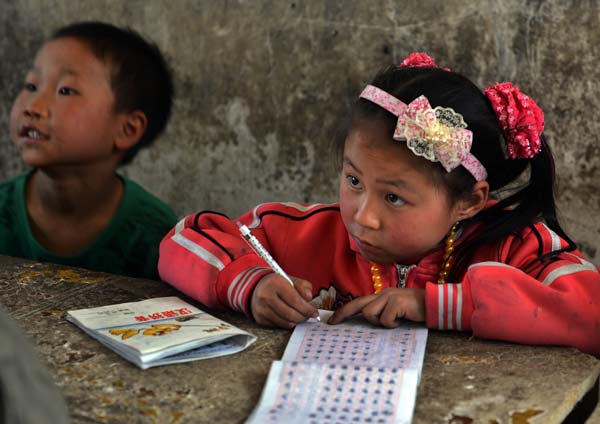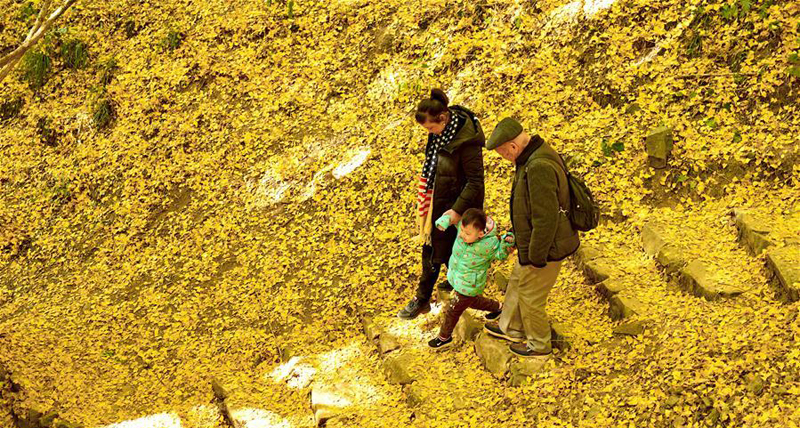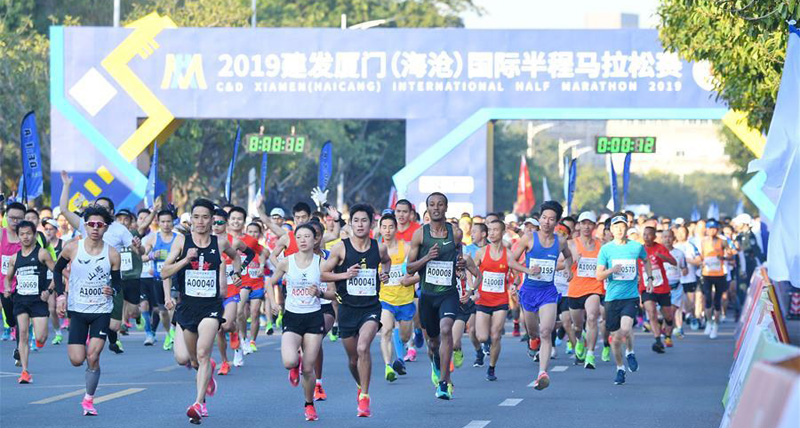Fujian issues guideline on child protection
By Hu Meidong in Fuzhou| chinadaily.com.cn| Updated: Oct 18, 2019

A girl attends a class at a rural school in Bijie, Guizhou province. [Photo by Peng Nian/For China Daily]
The guideline on further improving the care system for left-behind children and children living in difficulty has been issued recently in Fujian province, aiming to provide at least one welfare organization in every city by the end of 2020.
Fujian provincial Department of Civil Affairs, the Provincial Department of Education, the Provincial Public Security Department and another 10 departments jointly released the guideline, suggesting that by the end of 2020, the prefecture-level city should at least create one or two regional child welfare institutions featuring treatment, education and rehabilitation functions.
At county level and above, the minor protection institutions should be fully covered, while at district and county levels, there should be at least one child welfare institution.
The guideline clarified the functional orientation between the minor protection institutions and child welfare institutions, and pointed out the separate development direction of the two types of institutions. The former one is supposed to speed up the transformation and to upgrade, while the other should expand the social service functions. Both types of institutions are encouraged to actively open to children and families in need.
Besides, the guideline also requires that each village is supposed to be equipped with a "Children Director" and A "Children Supervisor" should be manned in each township government and subdistrict office.
It is necessary to increase the purchase services for the care and protection of children in difficulty, especially those provided by social organizations with mental health counseling capabilities.
The healthy development of both the physical and mental health of left-behind children and children in difficulty is guaranteed, the guideline said.
Not only will it offer interpersonal adjustment for children who lack care or suffer family trauma, but it also provides professional care services such as comfort, psychological counseling, and healthy personality growth.
Furthermore, social forces are also encouraged to participate extensively in the care services of left-behind children and children in difficulty.
The guideline will actively support social workers, legal workers, psychological counselors, and other professionals to provide technical targeted services.
Wu Yunru contributed to the story.



 play
play